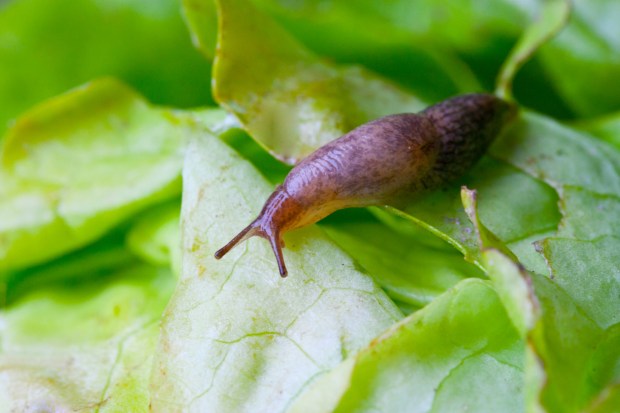IF your garden is looking a bit of a mess and you want to ensure it looks fresh for summer, then you’ve come to the right place.
It turns out that there’s a ‘nightmare’ pest that may be living in your garden – and it could be the reason why your grass and plants are ruined.
According to a grass expert, yellow patches on lawns can be an early warning sign of a potentially devastating pest infestation – and it can wreak extreme havoc on your garden.
So as the weather warms up and more and more gardeners head outside, you’ll need to pay attention if you want to stop considerable damage.
Ben Agnew, a grass expert at Lawnsmith, warned gardening gurus to be on the lookout for signs of leatherjackets – a common pest that destroys grass from the roots up.
The gardening pro explained: “Although small, these grubs can be a nightmare for your lawn.
“An infestation can undo all the hard work you’ve put in and leave you with nothing.
“They thrive by eating the roots of grass and plants, killing their food source as they go.
“As they exist under the surface of your lawn, the first sign of an issue is your lawn dying, leaving yellow patches that then turn brown.”
As well as this, Ben shared: “Crane flies, also known as daddy long legs, lay eggs in most UK gardens, usually at the end of summer.
“The damp, wet conditions experienced in the UK during winter create the perfect environment for the eggs to hatch into leatherjackets.”
Leatherjackets are legless grubs with tough, leathery skin.
These pests are typically grey or brown in colour and can grow up to three cm in length.
So if you’ve spotted leatherjackets in your garden and want to take action to avoid maximum damage, Ben added: “Prevention is easier than the cure for a leatherjacket infestation.
“Effective treatment comes in the form of microscopic bacterial worms, called nematodes, specifically ‘Steinernema feltiae’.
Common garden pests

Common pests in the garden don’t need to be a cause for alarm. If you can identify them, you can work on getting rid of them and preventing them from returning.
Aphids (Greenfly, Blackfly)
Aphids are extremely common and can impact plant growth. They have tiny soft pear-shaped bodies, and are usually green or black. You may spot them clustered on the stem of soft shoots – look under leaves in particular – or may find a sticky substance on your plants that gives away aphids have been there sucking at the sap.
Whitefly
These small white-winged insects are related to aphids, at just 1 or 2 mm in length, and look very much like white moths as adults. They can be found on the underside of leaves, preferring younger, fresher leaves. They fly in clusters when you disturb them. Their lifecycle is only three weeks long, which means an infestation can occur very rapidly.
Slugs
An unmissable, squashy-looking body plus small sensory tentacles on its head. Slugs move along on one muscular foot. They range in scale from surprisingly small to terrifyingly large; limax cinereoniger species can grow comfortably beyond 20 cm in length.
Cabbage Moth Caterpillar
Cabbage moth caterpillars happily make their way into the heart of the vegetables, The caterpillars are distinguished in shades of yellow or browny green with no hair.
Mealy Bug
Mealybugs are tiny oval-shaped insects that have a white, powdery wax coating. There are several different species, many of which have what looks like legs coming from their sides and back end. In their earliest stage of life, it’s entirely possible to mistake them for fungus and not recognise them as insects at all.
“Nematodes get rid of leatherjackets by infiltrating their outer casing and subsequently killing them.
“Leatherjackets can cause considerable damage, and even after treatment, it can be challenging to restore your lawn to its former state.
“It can take your garden some time to return to its former glory.”
Although small, these grubs can be a nightmare for your lawn
Ben Agnew
The best course of action, according to this expert, is to remove dead patches of yellowing grass and re-seed the area.
Applying fertiliser across your lawn can help maintain its overall health.
Lawns with poor drainage are more likely to suffer from a leatherjacket infestation, so addressing this problem is also key.
Tips for keeping pests from your garden

- Plant companion plants such as peppermint to repel rats.
- Place Garden Netting Pest Barrier, over your flowerbeds.
- Fill open-top containers with beer and place in soil to repel slugs.
- Spray plants with Neem Oil, to repel ants, flies, and spiders.
- Dust your flowerbeds with Diatomaceous Earth.
- Mix 1 tablespoon dish soap, 10 drops peppermint oil, and 4 cups water and spray on flowerbeds.
- Place eggshells around your plants to protect from slugs and snails.
Additionally, Ben recommended: “Aerating your lawn can help improve drainage. To do this, simply create holes in the turf to allow it to breathe and encourage water to disperse.”
As well as this, heavily shaded gardens can also suffer, so removing thick branches of overhanging trees and bushes can help more sunlight reach the turf.
Not only this, but Ben also stressed: “Some soils are better than others for drainage. For example, nutrient-dense clay soils can make gardens more prone to flooding.
“If you often see water pooling in your garden, investigate the type of soil so you know how to nurture the lawn correctly.”
Unlock even more award-winning articles as The Sun launches brand new membership programme – Sun Club









